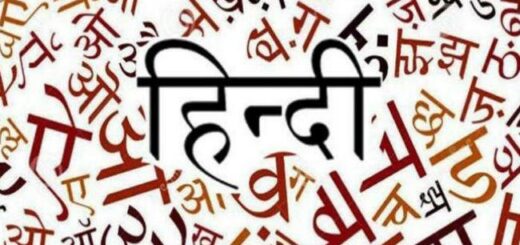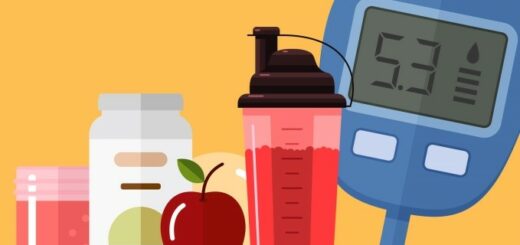National Current Affairs – UPSC/IAS Exams- 6th November 2019
Food Safety and Standards (Safe Food and healthy diets for School Children) Regulations, 2019
Topic: Health
In News: Aimed at enabling children to eat and grow healthy, the Food Safety and Standards Authority of India (FSSAI) released draft regulations titled Food Safety and Standards (Safe Food and healthy diets for School Children) Regulations, 2019.
More on the Topic:
- One of the important regulations proposed is that foods high in fat, salt and sugar (HFSS) cannot be sold to children in school canteens/mess premises/hostel kitchens or within 50 m of the school campus.
- Schools should adopt a comprehensive programme for promoting healthy diets among children.
- The school campus should be converted into ‘Eat Right School’ focussing on local and seasonal food and no food waste as per the specified benchmarks.
- Nutritionists, dieticians may be engaged by the school to assist in the preparation of menu periodically.
- There should be regular inspection of school premises where safe, healthy and hygienic food should be served to students.
- Children have to be encouraged to consume balanced diet in the school as per the guidelines issued by the National Institute of Nutrition.
Why this Move?
- According to studies, about 8% of schoolchildren are obese.
- This situation can affect the healthy development of the children and act as precursor to future ailments like diabetes and cardio vascular diseases.
Source: Hindu
Topic: Government Schemes
In News: Ministry of Skill Development & Entrepreneurship launches Skills Build platform in Collaboration with IBM.
More on the Topic:
- The program is launched by Directorate General of Training (DGT), under the aegis of Ministry of Skill Development & Entrepreneurship (MSDE).
- As part of the programme, a two-year advanced diploma in IT, networking and cloud computing, co-created and designed by IBM, will be offered at the Industrial Training Institutes (ITIs) & National Skill Training Institutes (NSTIs).
- The platform will be extended to train ITI & NSTI faculty on building skills in Artificial Intelligence (AI).
- The digital platform will provide a personal assessment of the cognitive capabilities and personality via MyInnerGenius to the students.
- They will then learn foundational knowledge about digital technologies, as well as professional skills such as resume-writing, problem solving and communication.
- Students will also receive recommendations on role-based education for specific jobs that include technical and professional learning.
- This initiative is part of IBM’s global commitment to create a job-ready workforce and to build the next generation of skills needed for new collar careers.
Source: Hindu
Topic: Health
In News: The data released by the National Health Profile (NHP)-2019 showed a higher number of people affected by Acute Respiratory Infections (ARI) in the country.
More on the Topic:
- ARI accounted for 47% of morbidity in 2018. It was the highest in the communicable disease category leading to 27.21% mortality.
- Andhra Pradesh, Gujarat, Karnataka, Kerala, Tamil Nadu, Uttar Pradesh and West Bengal reported a large number of patients and fatalities as per NHP-2019.
- According to the World Health Organisation (WHO), ARI is a serious ailment that prevents normal breathing function.
- Indians face the double burden of heavy air pollution in addition to the high rate of ARI which hits children the hardest.
- ARI is highest in the Andhra Pradesh, Gujarat, Karnataka, Kerala, Tamil Nadu, Uttar Pradesh and West Bengal.
- While breathing polluted air, particles and pollutants penetrate and inflame the linings of your bronchial tubes and lungs.
- This leads to respiratory illness such as chronic bronchitis, emphysema, heart disease, asthma, wheezing, coughing and difficulty in breathing.
Source: Hindu
Topic: Indian Geography
In News: The 5th edition wasteland atlas of India is released by the Department of Land Resources, Ministry of Rural Development.
Highlights of the Atlas:
- The spatial extent of wasteland is 55.76Mha (16.96 % of geographical area of the Country) for the year 2015-16 as compared to 56.60 Mha in the year 2008-09.
- During this period 1.45 Mha of wastelands are converted into non wastelands categories.
- A reduction in wasteland area was observed in the categories of land with dense scrub, waterlogged and marshy land, sandy areas, degraded pastures / grazing land and gullied and / or ravinous land.
- Positive changes were observed in the following States – Rajasthan, Bihar, Uttar Pradesh, Andhra Pradesh, Mizoram, Madhya Pradesh, Jammu & Kashmir and West Bengal.
- Majority of wastelands have been changed into categories of croplands.
About Waste Land Atlas:
- The 5th edition wasteland atlas of India is released by the Department of Land Resources, Ministry of Rural Development.
- The previous 4 editions were released in 2000, 2005, 2010 & 2011.
- National Remote Sensing Centre (NRSC), Department of Space collaborate with the ministry.
- The new wastelands mapping exercise is carried out by NRSC using the Indian Remote Sensing Satellite data.
- The changes in wastelands between 2008-09 and 2015-16 have been presented in the Atlas.
- It provides district and state wise distribution of different categories of wastelands area.
Source: Hindu
Topic: International Relations
In News: German chancellor Angela Merkel visited India as a part of the biennial Inter-Governmental Consultations (IGC).
More on the Topic:
- Germany and India signed 17 agreements and five joint declarations of intent in fields spanning space, civil aviation, maritime technology, medicine, yoga and education.
- India and Germany also committed to working together in areas like artificial intelligence, skills, and more.
India Germany Cooperation Areas:
- Economic Partnership: Germany is India’s largest trading partner in Europe.
- During the event in Indo-German Chamber of Commerce, Germany pointed out its benefits for investment in India by in infrastructure such as high-speed trains.
- Germany has emphasized the need to restart discussions on the Free Trade Agreement (FTA) between India and the European Union, talks for which began in the year 2007.
- Because of the complicated bureaucratic procedures in India, German investors hold back from making investments, India has committed to working on the areas.
- Infrastructure: India is exploiting German’s cooperation in Smart cities, e-mobility, harnessing water resources and Defence corridors.
- Indo-German Solar Partnership founded in 2015 and the cooperation on Green Energy Corridors established in 2013 are successful ventures between India and Germany.
- Germany also plans to spend up to 1 billion euros in India over the next five years as part of a new partnership between the nations on green urban mobility.
- Tech & Innovation: For the development and use of AI, Germany and India agreed to work closely together to conduct bilateral and multilateral research and development activities.
- Previously, the two countries had signed the Joint Declaration in the Field of Digitalization, Empowerment and Economic Impact in 2017 to broaden the digital dialogue.
- Security: The two leaders also emphasized the “global scourge” of terrorism and urged countries to not let their territories be used to launch terrorist activities.
Source: Hindu
Carbon dioxide (CO2) Emission Reduction
Topic: Environment and Ecology
In News: According to an analysis published in ‘Carbon Brief’, Carbon dioxide (CO2) emissions in India are set to grow at their slowest in the year 2019, which is a rise of only 2% from the year 2018. The 2% rate is a lower rate than any annual increase since 2001.
Reasons for reduction of CO2 Emission:
- Economic slowdown in the country is the main reason behind the reduction of emission.
- Oil demand growth slowed to 2.6% in the first eight months of 2019, compared with 4.6% in 2018, and 5% on average over the past 10 years.
- Use of petcoke (an oil refining byproduct) continues to fall after an import ban was put in place. India banned the import of petcoke for use as a fuel in 2018.
- Thus, import of petcoke is allowed for only cement, lime kiln, calcium carbide and gasification industries, when used as the feedstock or in the manufacturing process.
- A lighter fraction of refined crude oil used in the chemical industry also reduced, likely due to slower growth in petrochemicals.
- Slowdown in the expansion of coal-fired electricity generation and surge in renewable power generation.
- Due to rapid growth in renewable generation, the share of coal in meeting the electricity demand has decreased, wind, solar and hydro energy met 70% of the increase in electricity demand during the initial months of 2019.
- Slower growth in coal-based power generation will benefit the country’s air quality efforts, as essentially all coal-fired power plants in India lack pollution controls which are necessary in countries like China and the European Union.
This fall will help India in achieving its renewable energy targets:
- The targets of India’s Nationally Determined Contributions (INDCs) include:
- To reduce the emissions intensity of its GDP by 33 to 35% by 2030 from 2005 levels.
- To achieve about 40% cumulative electric power installed capacity from non-fossil fuel based energy resources by 2030.
Source: Hindu
Chennai-Kanyakumari Industrial Corridor (CKIC)
Topic: Economy
In News: The Asian Development Bank will provide a $451 million (appx. Rs.3,200 crore) loan to strengthen power connectivity between southern and northern parts of Chennai-Kanyakumari Industrial Corridor (CKIC) in Tamil Nadu. This project is a part of East coast economic corridor.
More on the Topic:
- The focus of CKIC will be on manufacturing.
- ADB has been assisting in developing CKIC, which covers Tamil Nadu’s 23 out of 32 districts, accounting for 64% of Tamil Nadu’s area and 70% of state population. The ADB project will allow more power,(which includes renewable energy) to be transferred from new generation facilities in south CKIC to north, where demand is high.
- The estimated date of completion of project is by end of 2024.
- CKIC will help in promoting Tamil Nadu’s economic development by delivering a more reliable and competitive power supply for industry and services within the state, which will in turn increase jobs and improve livelihoods.
About East Coast Economic Corridor (ECEC):
- ECEC is India’s first coastal economic corridor along eastern coast. It stretches about 2,500 kms from Kolkata (West Bengal) in the north to Kanyakumari (Tamil Nadu) in the south.
- It will connect long eastern coastline and strategically located ports with the multiple international gateways to connect India with global value chains (GVCs) in East and Southeast Asia.
- It supports Union Government’s flagship Make in India campaign, which aims to boost manufacturing by attracting foreign investment and facilitating the establishment of manufacturing hubs.
- ECEC also aligns with port-led industrialisation under Sagarmala initiative and Act East Policy by linking domestic companies with vibrant global production networks of East and Southeast Asia.
Model Mains Question: Discuss the Role and Significance of Asian Development Bank.
Source: Hindu


















